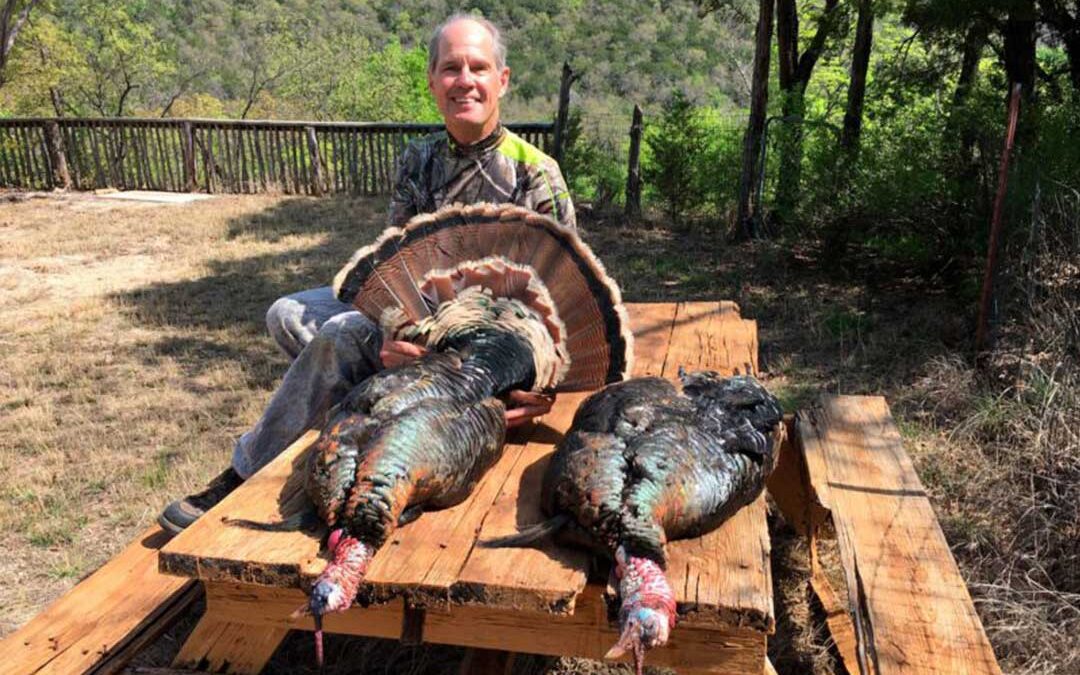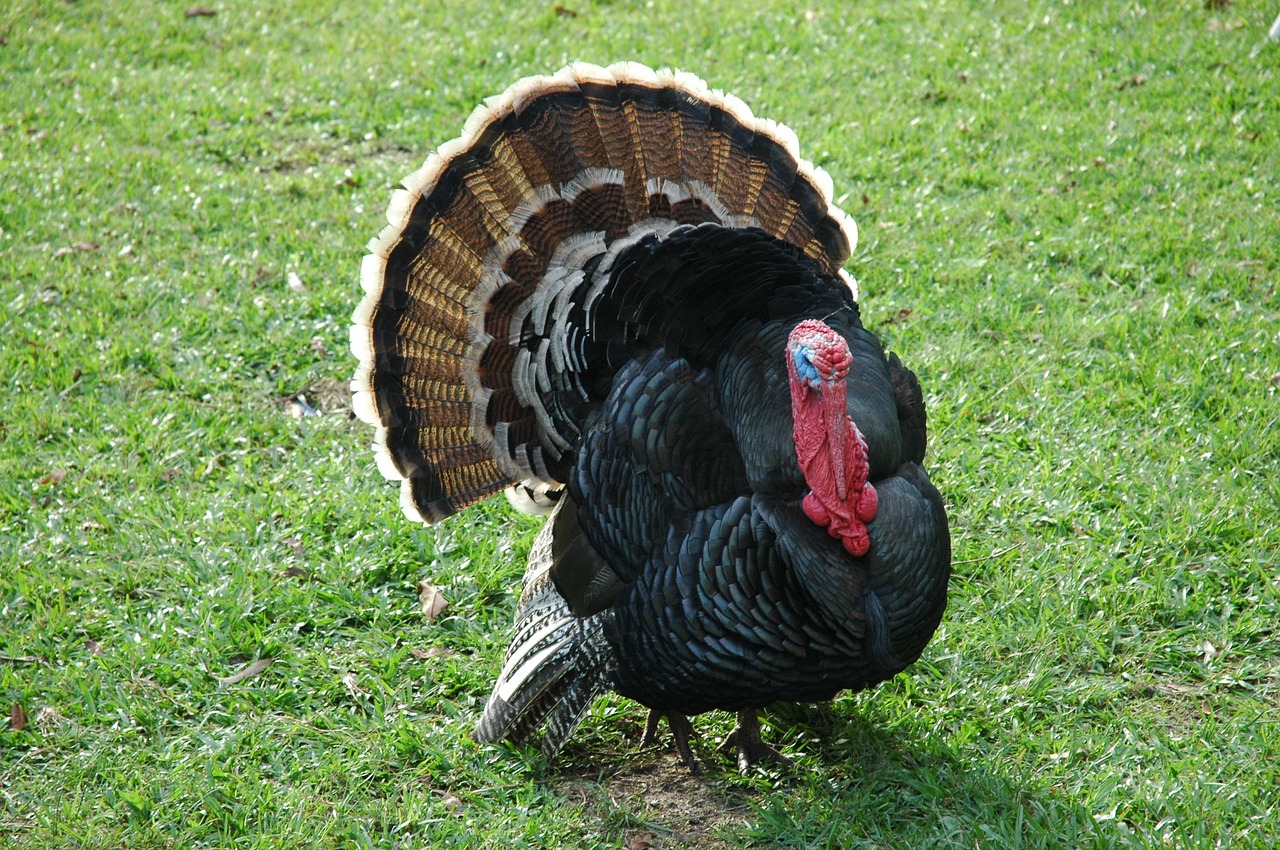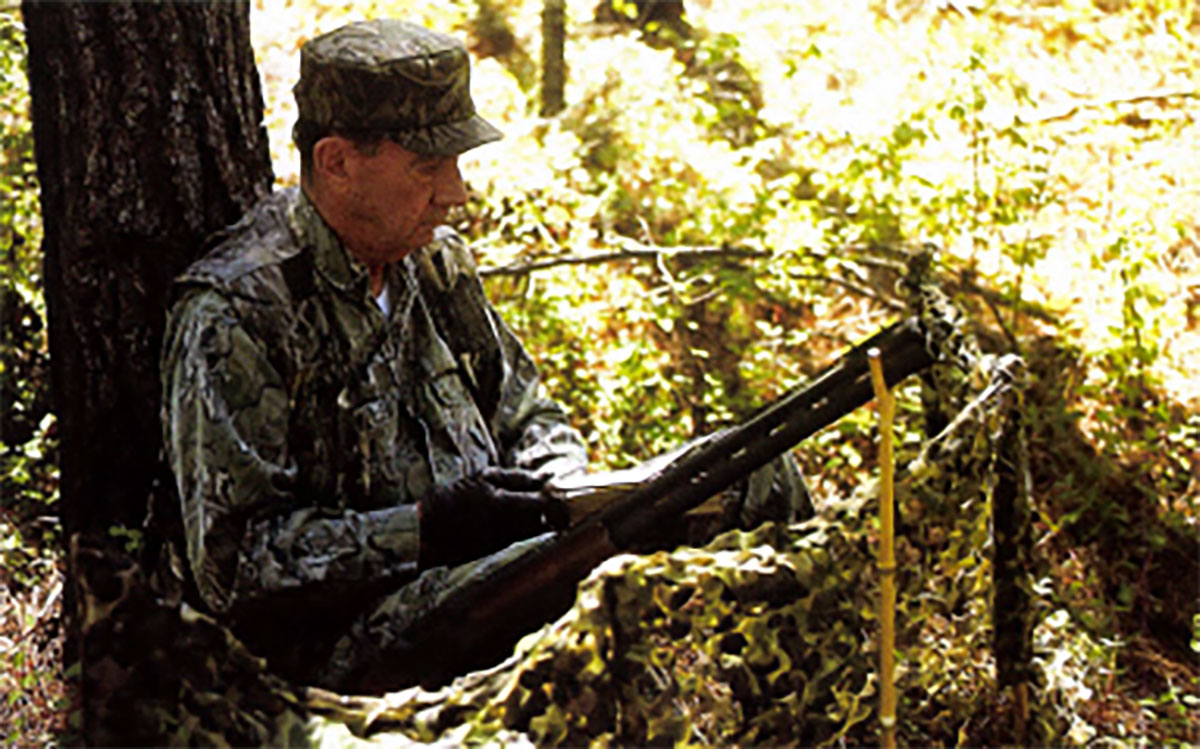Ken and I headed out to match wits with the Rio Grande turkey here in Texas. Ken had scouted the evening before and seen 12 turkeys, including a full-blown fight between two evenly-matched toms. We discussed all aspects of the upcoming hunt. We knew where we were going to set up, where we would place the decoys, who would sit on which side, who would be the primary caller. We had clear delineations for fields of fire. We each knew the effective range of the other’s shotgun as well as our own, and who had the option of shooting first.
I was the primary caller, hunting with my 20-gauge Citori. Ken had the first shot at any solo tom, hunting with his 12-gauge Beretta Onyx. We arrived early and set up carefully, using rangefinders to establish the range to specific trees. Tree gobbles soon sounded from three separate toms. We waited until we heard ground gobbles, then began calling. Almost immediately we saw a beautiful tom in full strut 120 yards away, followed by a jake. Everything thus far was just like on paper.
And then it all changed. The tom and jake veered off into some woods and out of sight in response to a hen’s call. Two hens appeared to our right and walked up to the decoys. The hens settled down to feed as the morning brightened. The tom reappeared, again in full strut, a hen in tow. He was to our right, Ken’s side, and was a solo tom, Ken’s shot. The tom worked closer, 40, then 35, then 30 yards away. Inside I was screaming “shoot!” while remaining both motionless and silent. Then using subtle sign language, Ken indicated that he did not have a shot due to the height of the brush, and signalled that if I had a clear shot I should take him. The tom was now 20 yards away and behind thick brush, drumming and spitting. I shifted around and raised my gun. He strutted back into view and came out of strut, leaving his head and neck exposed. He dropped at the shot, 28 yards away.
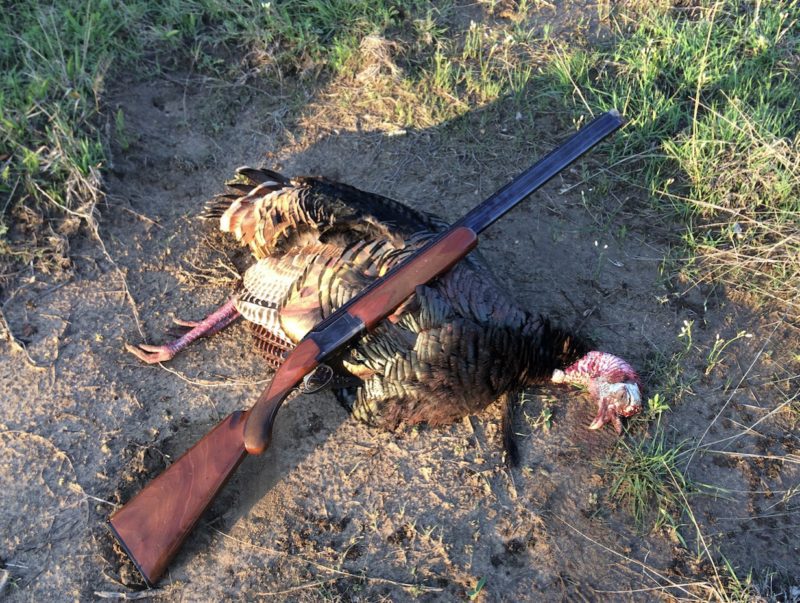
I was immediately both elated and conflicted. We had taken a nice tom before 8 a.m. but had broken all the carefully-established rules – this should have been Ken’s bird. Ken was gracious, insisting that I had to take the shot. I was 90 percent convinced.
On a whim, we decided to check out the nearby lake and try calling. We parked the truck within sight of the shoreline and called from there. We were immediately rewarded with a strong gobble in the distance. I found a spot nearby to call while Ken moved into the brush. The new plan was for Ken to ambush the gobbler as he searched for the hen. That plan didn’t work. We met back at the truck. Ken put up his gun and I my calls. Headnets hats and gloves were removed as we talked of the beautiful day and the successful hunt that in no way resembled our plan.
Then I looked across the lake. A large gobbler was strutting and gobbling at water’s edge. My calling had fired him up. Our plans went off the rails one last time, in a very good way. The tom took wing and flew across the lake – 200 yards of water! Once he’d landed, he would be only 150 yards away, with the ranch road we were on being the easiest route for him to take.
Being a model of calm under pressure I began to screech to Ken to grab his gun. Ken, moving faster than I have seen in years, headed toward the nearest cover 40 yards away. I grabbed my calls, sat down in the bed of the truck, and began to yelp.
I was beginning to wonder if the tom had been spooked by a this strange “hen” yelping from inside a vehicle, when I heard a shotgun blast. I walked to the front of the truck, barely daring to hope. Then Ken motioned me over and both joy and relief washed over me. The tom had walked straight up the road. Ken had positioned himself well, and had a clear shot when the tom came into view. The shot was only 17 yards, and he dropped immediately. It was 10:20. Elation ensued.
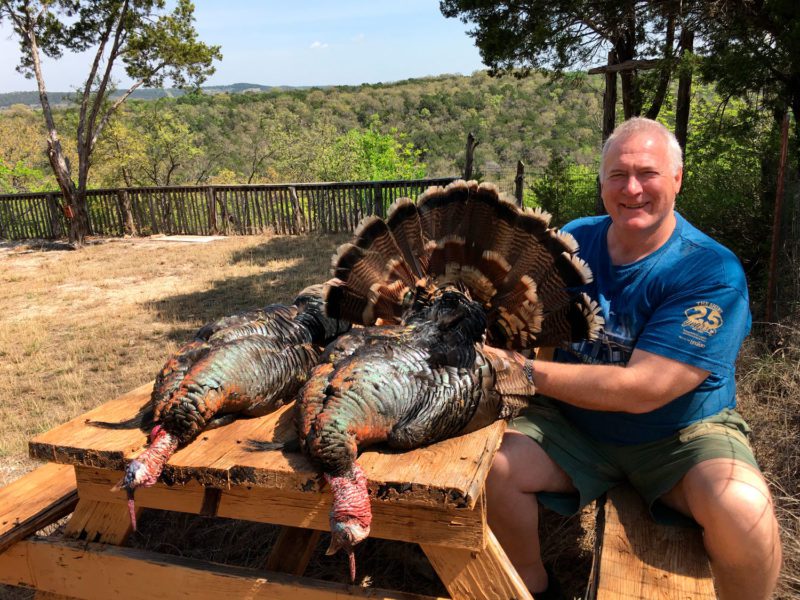
Ken’s tom was a mirror image of mine. We had two fully mature gobblers in hand before noon on opening day. The fact that absolutely nothing had gone as drawn up on paper mattered in the least.

